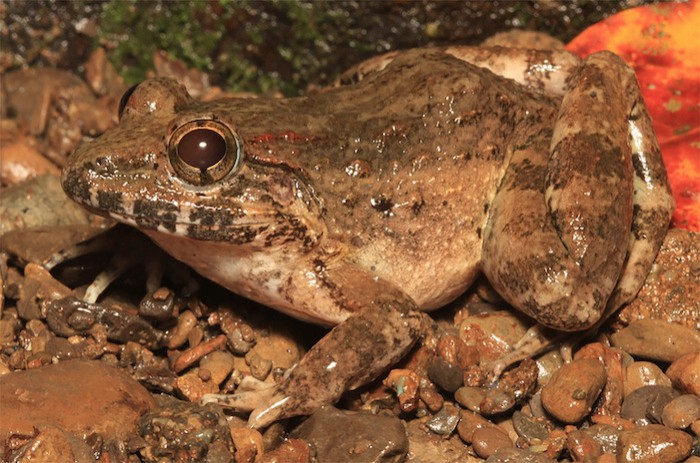New species of frog has been discovered in the Philippines and while it may look no different from other species in the nearby islands, its distinct mating call and differences in genome make it a fantastic find.
In their study, "A New, Morphologically Cryptic Species of Fanged Frog, Genus Limnonectes (Amphibia: Anura: Dicroglossidae), from Mindoro Island, Central Philippines" in the journal Ichthyology & Herpetology, researchers from the University of Kansas described the fanged frog as a "cryptic species". This is because the frog was concealing itself from biologists for so many years, said KU Biodiversity Institute doctoral student Mark Herr, the study author in a Phys.Org feature.
For the last 100 years, scientists assumed that these frogs were no different from the other frogs on other islands in the Philippines have indistinguishable features. But researchers analyzed the frogs and discovered that they are genetically isolated. They also found out that elicit a unique sound, having used acoustics to know that the species are distinct.
Identical to Acanth's Fanged Frog in Palawan
KU scientists working in Mindoro Island in the Central Philippines gathered genetic samples of the locally popular Mindoro fanged frog or Limnoncetes beloncioi several years back but haven't studied them until recently. Due to its similarities to an identical fanged frog in the neighboring Palawan Island named Acanth's Fanged Frog, scientists thought they were of the same species.

Researchers measured hundreds of the frogs, taking into consideration the length of their digits, width of the toe, the length of a particular segment of its leg, and diameter of its eye, to accurately compare populations statistically.
After running statistical analyses on body size and shape and a component analysis that takes into account the measurements to compare frog morphology in the multivariate space, researchers found nothing different based on their physical attributes, as noted in ResearchGate.
Genetic Tests
Because these fanged frogs stay in islands that are separated by miles of ocean, researchers thought the frogs might not be the same species because they different mating call sounds, Earth.com revealed in a feature. They would then finally check the frogs' genome and discovered that the Mindoro Fanged Frog was indeed a unique species.
Researchers ran genetic analyses of the frogs, utilizing specific genetic markers and a molecular clock model to take a basic estimate of the time the frogs had been separated from one another. Researchers discovered that the Mindoro and Palawan Fanged Frogs are related, but separated for two to six million years.
The frogs' fangs are used in the battle to reach prime mating sites and to defend themselves against predators. The Mindoro Fanged Frog, which is a stream frog, is at times hunted for food.
Morphologically the Same, Genetically Different
Yet the frog's unique mating call, which is different from the Acanth's Fanged Frog in Palawan, was a challenge for researchers to record. But with the help of local people in the islands, researchers were able to record the frogs' characteristic call sounds.
Yet while researchers indeed discovered the Mindoro Fanged Frog is of a distinct species using new technology, genetic information and bioacoustics data, they emphasized that morphologically, the frogs' physical attributes have not diverged. They said such species formation unaccompanied by morphological differentiation is labeled "cryptic speciation."
Check out more news and information on Frogs on Science Times.












